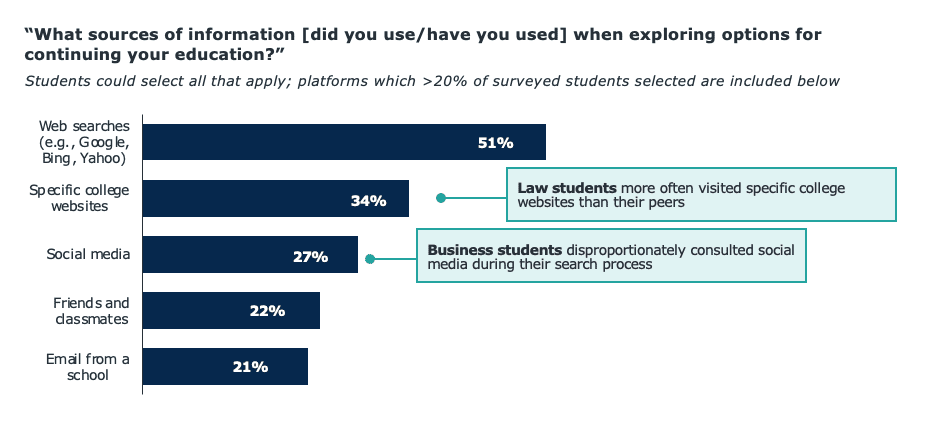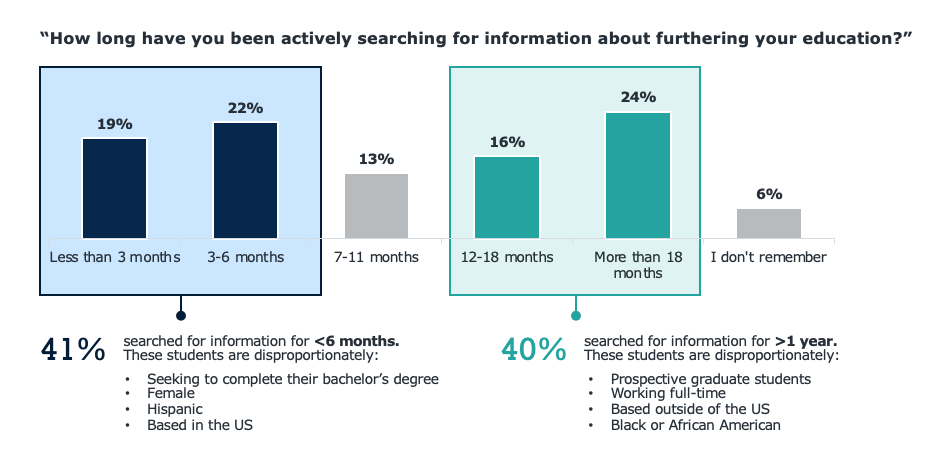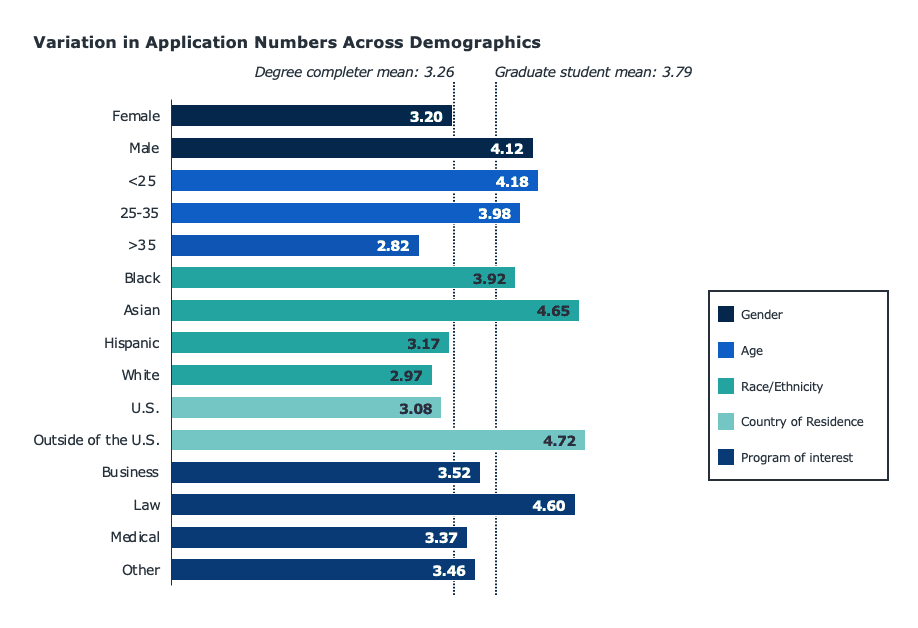Your future grad and adult students’ new search behaviors
If you’re looking to grow your graduate or adult student enrollment, it’s essential to understand how students’ search and application behaviors are shifting. However, that’s a topic that can be difficult to pin down. That’s why our Adult Learner Recruitment team recently surveyed over 6,000 graduate and adult learners to learn more about their changing preferences and tendencies when they search for programs.
Read on for five key insights on how your students are searching—and finding—your programs.
Students almost exclusively use digital channels, with preferences varying by program of interest.
When we asked survey respondents which sources they used when searching for academic programs, the top five most-selected were all digital sources. While this might seem obvious, it’s important to note one reason behind this trend: today’s students prefer conducting their program search independently. This data aligns with a trend we’ve been watching closely at EAB: the growth in “stealth shoppers,” or students who remain unknown to you until they decide to apply. In the current era of pervasive stealth shopping, it’s important to make sure you’re using a wide variety of lead generation sources that can help you find and engage hard-to-reach students

Are You Finding and Engaging Stealth Shoppers Effectively?
It’s also worth noting that students’ preferred digital sources varied according to their academic program of interest. For instance, law students used specific college websites more often than their peers, and business students disproportionately used social media as a search tool. Make sure you know which digital channels your target audience uses most often and meet them where they are.
Optimizing your SEO strategy is crucial to enrollment success.
As the chart in the above section shows, web search plays an outsized role in graduate and adult students’ search processes. Paid search ads can be a great source of leads, but it’s important to know that “banner blindness,” or users’ tendency to subconsciously look past links that appear to be ads, may hinder you. Only 39% of our survey respondents said that they clicked on both sponsored and non-sponsored links during their search process. That means having a solid SEO strategy is incredibly important in making sure your website is findable to students. Ensure your strategy optimizes your site content for relevant keywords. This will help ensure that prospective students, particularly those who tend to skip over ads, can easily find your programs through organic search.
Your .edu website is one of your most important recruitment tools.
-
84%
of survey respondents said a poorly functioning website will negatively affect their opinion of a school
You can assume that nearly all of your prospective students have been on your university website. A whopping 94% of survey respondents told us they make a point of visiting the website of each school where they are considering applying. And there are high stakes to having a strong .edu site—nearly 90% of respondents said a poorly functioning website negatively affects their opinion of a school. Ensure your enrollment-critical webpages are up-to-date, navigable, and provide students with the information they seek most, such as admissions requirements, cost and financial aid, and program modality options.
You’re Probably Missing These Four Critical .edu Site Components
The length of students’ search processes differs based on demographics and programs of interest.
Past EAB research has shown that adult student journeys to enrollment are highly individualized. Our new data reinforces this point with fresh insights: the percentage of our respondents who searched for program information for less than six months (41%) was about even with the percentage that searched for over a year (40%). Even more intriguing is that these search durations are largely split along program interest and demographic lines. Students who only searched for less than six months were most often adult degree completers, female, Hispanic, and based in the US. Conversely, the students who searched for over a year were most often prospective graduate students, full-time employees, internationally based, and Black or African American. But these aren’t hard and fast divisions, and the most important takeaway here is that you should be prepared to nurture students throughout their student journey, regardless of its length. Marketing to prospective applicants for at least two years ensures your institution remains top of mind as they continue to search.

Adult learners apply to fewer than five schools on average.
Though the number of schools our respondents eventually applied to differs across demographics and programs of interest, as shown in the chart, the average across all demographic segments was less than five schools. The overall prospective graduate student mean was 3.79 schools, and the adult degree completer mean was only 3.26. The fact that students apply to relatively few schools underscores the importance of maximizing your reach among students early on in their journey before they’ve narrowed down their choices.
It also means that you’ll need to have a strong yield strategy that converts admits to enrollments effectively. This includes offering multiple application deadlines to drive urgency, focusing outreach on your admits that have a high intent to enroll, promoting your differentiators to stand out among students’ choices, and encouraging your faculty to connect with admitted students directly.
These findings can help you better understand your students’ search preferences and behaviors—but know that they will continue to transform and evolve over time. Regardless of what trends may arise, maintaining a multi-channel marketing strategy that is equipped to find and recruit students throughout their search process is key to graduate and adult enrollment growth.


More Blogs

AI visibility is critical when competing for student enrollments

Demographics shape the enrollment landscape, but strategy determines success
